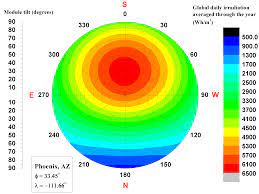Typical Meteorological Year (TMY) data, often considered a powerful tool for various industries, holds a lurking danger beneath its seemingly benign surface. This article aims to shed light on the lesser-known risks associated with TMY data, urging users to approach its utilisation with caution and awareness.
1. Overlooking Anomalies:
TMY data is typically generated by compiling historical weather information, but it may inadvertently overlook anomalies or extreme events. Relying solely on TMY data without considering outliers can lead to underestimating the potential risks associated with unusual weather patterns, such as severe storms or prolonged droughts.
2. Climate Change Blind Spots:
TMY data, often derived from past climate conditions, may not fully account for the rapid changes occurring due to climate change. Using outdated TMY data might result in inaccurate predictions and risk assessments, as it may not reflect the current and evolving climate reality.
3. Limited Spatial Resolution:
TMY data is typically aggregated for broad geographic regions, offering limited spatial resolution. This can be problematic for industries requiring precise localized weather information, such as urban planning, where microclimates play a crucial role. The broad strokes of TMY data may not capture nuances that are essential for decision-making in certain contexts.
4. Incomplete Data Sets:
The accuracy of TMY data relies on the completeness of historical weather records. In regions with sparse or incomplete data, TMY data may lack the necessary granularity for thorough analysis. This can lead to gaps in understanding and potentially misinformed decisions, especially in areas where accurate weather information is scarce.
5. Assumption of Stationarity:
TMY data assumes stationarity, meaning that climate conditions remain relatively constant over time. However, with the current pace of climate change, this assumption is becoming increasingly unreliable. Relying on TMY data without considering non-stationarity can result in inaccurate projections and an underestimation of climate-related risks.
6. Risk of Underpreparedness:
Depending solely on TMY data for risk assessments may lead to underpreparedness for extreme weather events. Unforeseen climatic changes or the intensification of weather patterns can catch businesses, communities, and governments off guard, potentially resulting in severe consequences.
7. Misguided Infrastructure Planning:
TMY data, when not used judiciously, can lead to misguided infrastructure planning. Depending on outdated or incomplete data may result in infrastructure that is ill-equipped to handle the challenges posed by current and future climate conditions, leading to inefficiencies and potential vulnerabilities.
